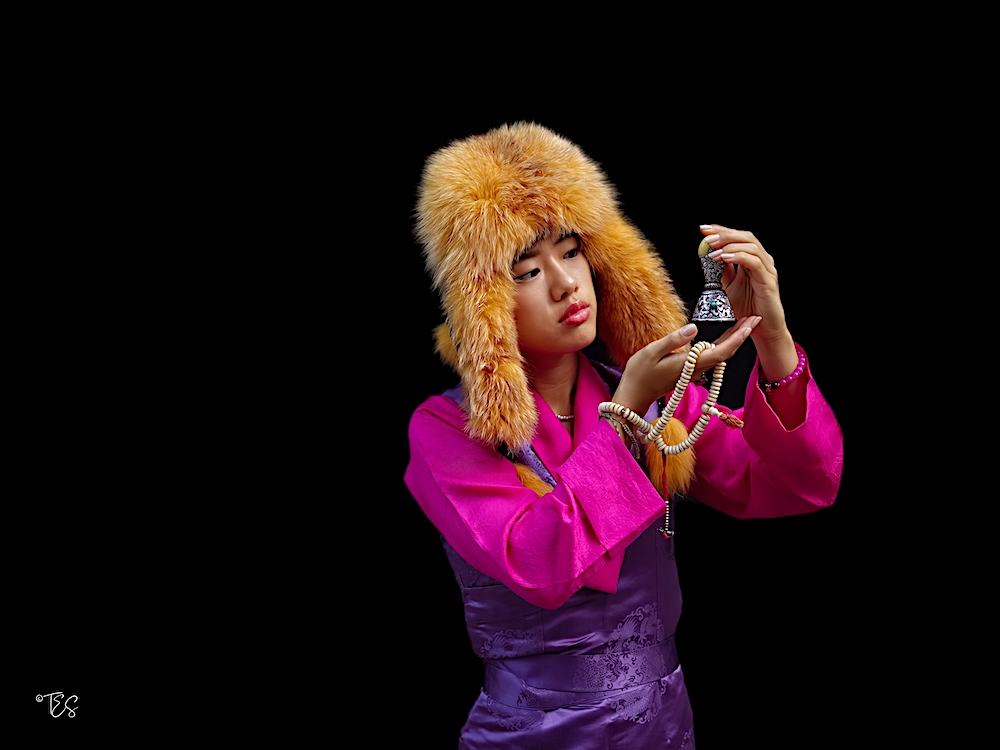Kunchok Palmo's Tibetan heritage is front and center with a resplendent purple and fuchsia "chuba" (can also be known as chupa) outfit. It's a unisex garment, and worn all over the Tibetan Plateau with roots deep in Central Asia. The traditional "chuba" is an ankle-length robe tied around the waist by a long sash. For the photo shoot I provided a Mahākāla wooden mask from Bhutan, along with bone prayer beads and an ancient seal. Mahākāla is a deity common to Hinduism and Tantric Buddhism, and is considered as a protector deity.
Kunchok's name is Tibetan/Nepali for "goddess". Tashi Delek (བཀྲ་ཤིས་བདེ་ལེགས) is the Tibetan expression used in greeting, congratulation, and also used to bid good-luck wishes.
We had arranged to meet in SoHo for a 2-hours photo session, but as I had scouted the area a day earlier, we went first to Cortland Alley whose graffiti-laden walls I had seen on Sunday were just "begging" to be powerful backdrops. Unfortunately, a moving truck was parked in a way that we didn't have an accessible area for Kunchok to pose and for me to photograph...however, we managed a few poses using some angles.
Following the 15 minutes in Cortland Alley, we continued the shoot on the nearby SoHo streets. The black gates of the Wooster public parking garage offering the best "studio-like" backdrop.
Kunchok Palmo by Tewfic El-Sawy on Exposure































